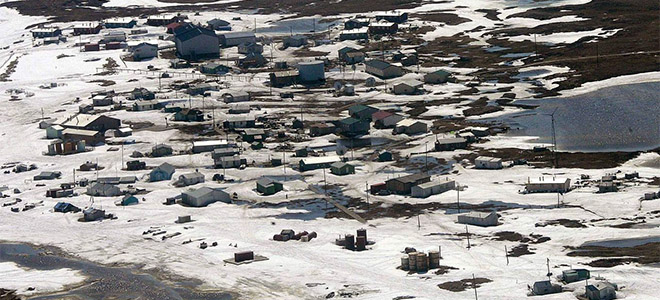
by Elizabeth Arnold
Los Angeles Times
May 27, 2018
Overwhelmed by climate change? It’s not your fault.
Actually, you are to blame for climate change. But it’s the media’s fault for making you feel completely hopeless about it.
That includes me. As a correspondent for NPR 10 years ago, I did a story on Newtok, a remote Yupik community in northwest Alaska that was both sinking and eroding because of the effects of global warming. In the decade since the report aired, hundreds of national and international reporters have visited Newtok, and a dozen other Alaskan communities like it, to document the effects of climate change.
The stories all fit the same narrative. With somber music, images of houses and schools tipping precariously off cliffs and phrases like “impending doom,” the reports paint a picture of tragedy and hopelessness and frame the residents as victims, climate change “refugees” whose communities are one bad storm away from ceasing to exist.
The repetition of this narrative over the last 10 years has done little to help. There is still no dedicated agency or funding at the federal level to address climate-induced relocation. And while the public is slowly accepting the reality of warming, even those identified as the most alarmed say they don’t really know what to do about it.
This familiar narrative, about communities facing sea level rise and coastal erosion, fits into a larger pattern of climate change coverage. The threats posed to humans, polar bears and entire ecosystems are recounted on a daily basis, leading to what researchers call a “hope gap.” With little offered in the way of action or response, people eventually tune out: “We’re doomed. What’s on Hulu?”
As someone who lives in Alaska and has been to the North Pole twice, I’ve got a pretty good idea of how bad it is. What I’d like to know more about is what people are doing to counter it. I want to know how cities are meeting emissions targets in spite of the Trump administration’s environmental rollbacks. I want to know that the fastest-growing job in the country is solar panel installer.
‘m not alone, apparently. A surprising number of scholars are studying how the public responds to climate news. There’s even a Media and Climate Change Observatory that keeps daily track of climate-related stories. In 2004, its founder, Max Boykoff, was among the first to identify a trend of “false balance” in the early reporting. That’s the practice of pairing a contrarian view from an organization skeptical of climate change to “balance” the view of a reputable climate scientist. Several years later, Boykoff took another look and found that most news organizations had self-corrected. More recently, he called attention to a “trend of daily fear, misery and doom” that leaves audiences feeling powerless. Read more …

